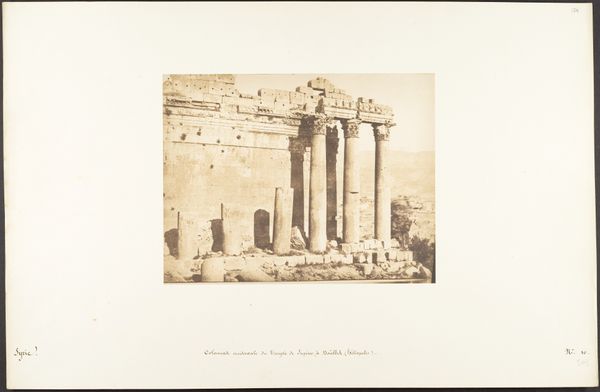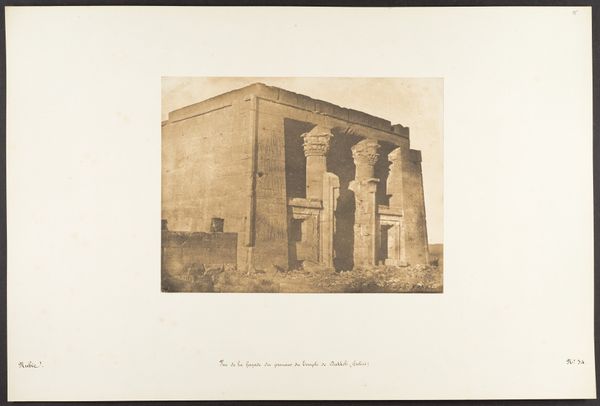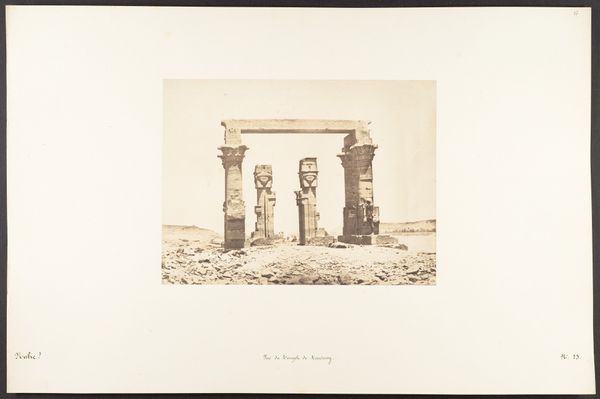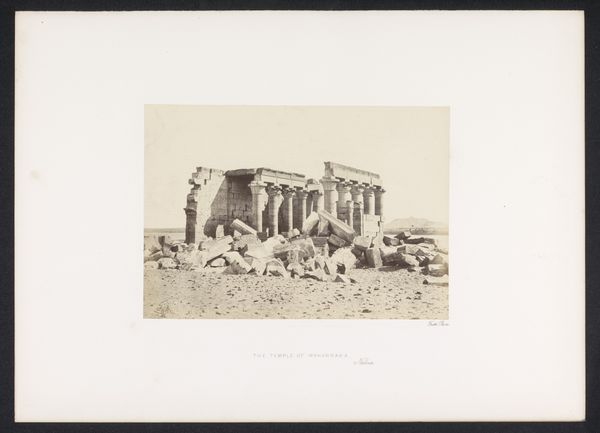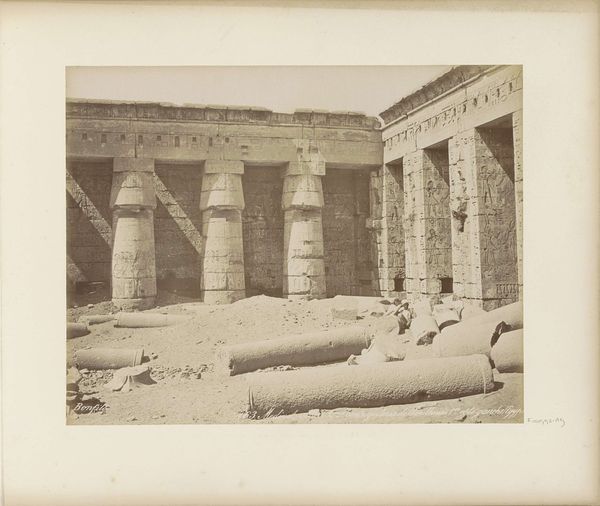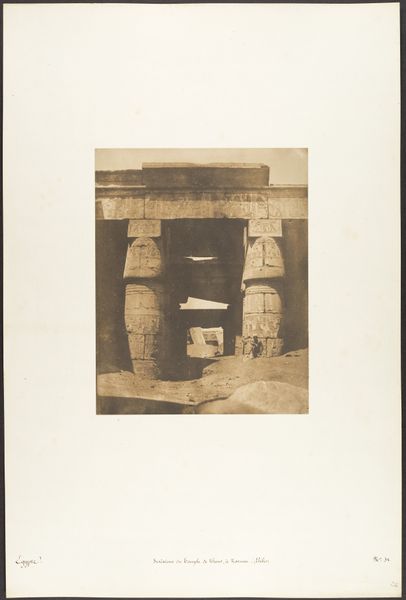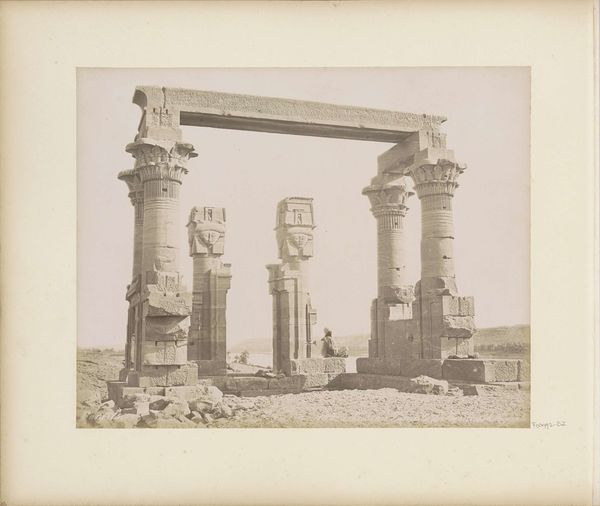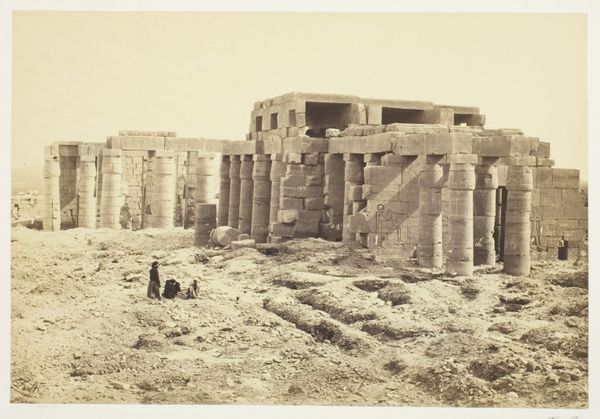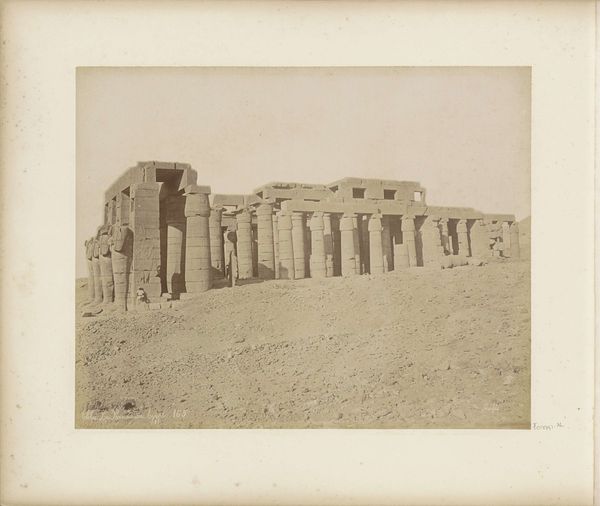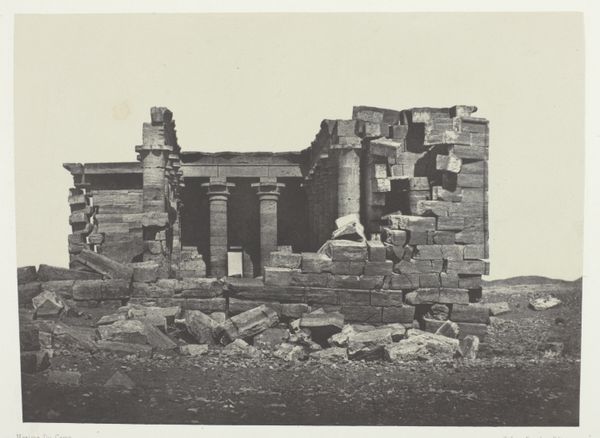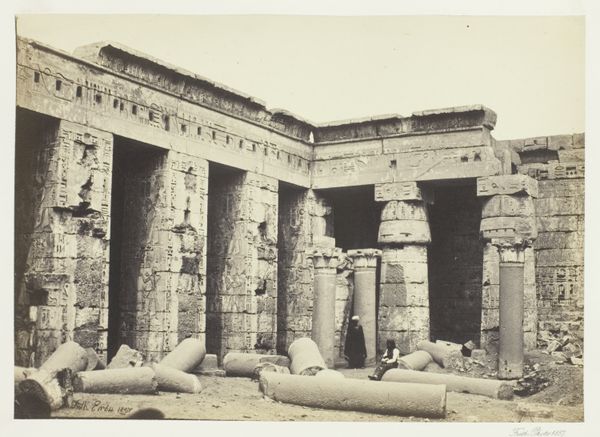
Porte Septentrionale de la Salle Hypostyle du Palais de Karnac 1849 - 1850
0:00
0:00
photography, gelatin-silver-print, architecture
#
landscape
#
ancient-egyptian-art
#
photography
#
ancient-mediterranean
#
gelatin-silver-print
#
architecture
Dimensions: Image: 6 1/8 × 8 1/4 in. (15.5 × 21 cm) Mount: 12 5/16 × 18 11/16 in. (31.2 × 47.5 cm)
Copyright: Public Domain
Editor: Here we have Maxime Du Camp's gelatin-silver print, "Porte Septentrionale de la Salle Hypostyle du Palais de Karnac" from around 1850. There's something really compelling about seeing this ancient structure captured through the lens of early photography. How can we interpret this work through the context of its materiality? Curator: This print provides a fascinating opportunity to consider the labour and materials inherent in its creation, as well as those depicted within it. Consider the ancient Egyptians, who quarried and carved these colossal columns. Then fast forward to Du Camp, embarking on a journey enabled by industrial advances in travel and photography, also forms of production. He deploys those technologies to render visible the products of previous, vast, and largely unfree, labour. How does photography, as a medium, mediate our understanding of ancient labour and artistry? Editor: That's an interesting point – the layers of production. Du Camp is using the very latest techniques to picture ancient techniques. Do you think he was making a statement about how different kinds of work are valued? Curator: Perhaps indirectly. The rise of photography was deeply intertwined with industrial capitalism. Photographs, unlike paintings, suggested an objective rendering of the world. The ease of reproducibility via gelatin-silver printing allowed for broader distribution, but at what cost? How much does Du Camp highlight or obscure the labour conditions involved in both the building of the temple, and the production of this photographic print? Are both presented as almost miraculous feats? Editor: I hadn't thought about it that way before. I see now how understanding the process and materials lets us think about whose work is visible and whose isn't. Thanks for shedding light on this work! Curator: The layers of visibility and invisibility are a crucial element here. By tracing the making of this image, and what it depicts, we confront complex economic, social and artistic questions about how we perceive and value labour across time.
Comments
No comments
Be the first to comment and join the conversation on the ultimate creative platform.

